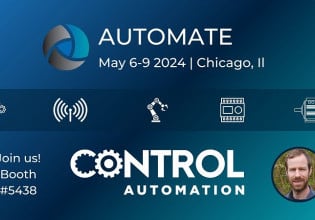ContaClip Releases New Push-In, High-Capacity Terminal Blocks
ContaClip adds to an existing product line of terminal blocks with versions that support 10mm^2 conductors up to 4 amps, with a double-level version for added wiring capacity.
Terminal blocks are commonly found inside electrical cabinets, being used to join circuits and wires in a secure and safe manner. A common practice is to run all incoming sensors to terminal blocks and then continue carrying the sensor signal to control systems or input devices from the other side of the terminal block. This method speeds up the disconnection between the electrical cabinet and equipment for more modular shipping and installation.
There are some limitations to terminal blocks, typically in their inability to accept large-gauge conductors carrying more significant current levels.
ContaClip, a well-known European terminal block manufacturer, has recently added several new products to its line of terminal blocks, strategically designed to alleviate some of the issues with terminal blocks.

Single-level PRK and PSL terminal block examples. Image used courtesy of ContaClip
PRK And PSL Terminal Blocks
Terminal block advancement may not seem like a big deal, but with the amount of time electricians spend working with terminals, advancements can save time and space in the cabinet. The new PRK and PSL terminal blocks have up to four ports per block, and feature easy push-in contacting. By having up to four ports in each block, designers and electricians can easily combine up to four conductors with one block. This feature can save space and reduce daisy-chaining terminal blocks.
The push-in contact provides a toolless design that is a fast and reliable way of making solid connections without the need for tools. Solid core conductors and stranded core conductors with ferrules can be pushed into the spring-loaded clamp by hand, thus providing a solid electrical connection. The PRK and PSL's latest advancement is the ability to accept conductors up to 10mm^2 cross-section area and currents up to 4 Amps. Many other terminal systems are more limited in maximum conductor size and current ratings, so if larger conductors are required, a different terminal block needs to be used. This causes confusion and results in multiple part numbers for similar components, or oversized blocks for the smaller applications.
PRKD and PLSD Double-Level Blocks
A separate announcement revealed a corresponding line of terminal blocks with an additional second level. Each level is available with either 2 or 3 connection points.
A handy troubleshooting feature available on all the new series is the inclusion of a small multimeter insertion point for every terminal. Wiring problems can be located much more quickly without removing wire connections and risking further damage or injury.

Double-level PRKD and PSLD terminal block examples (jumper bar locations are shown in red along the lower edge of the top and bottom level). Image used courtesy of ContaClip
Pros And Cons of Terminal Blocks
Terminal blocks are a very useful tool in electrical design. They provide a safe, secure, and convenient way of connecting conductors and circuits together. Even with these benefits, they can have some negative aspects. Some styles use a screw to lock the conductor down, which can loosen over time with vibration, especially if not properly torqued each time.
With these push-in style blocks, similar to ContaClip’s PRK and PSL terminals, a quick confirmation is required to ensure that the conductor is indeed firmly in place. Sometimes, the ferrule might have a small burr or edge that gets snagged, giving the technician a false sense that the conductor has been inserted all the way, leading to issues later. As long as proper understanding and training is conducted, these terminal blocks are widely considered across the industry as the de-facto standard in connecting and combining circuit elements.

Terminal blocks are an absolutely integral component of nearly every modern control cabinet. Image used courtesy of Adobe Stock
Electrically Connecting Modern Systems
There are many uses for terminal blocks, but a very common method is to combine circuits together. Typically in a control cabinet, you might have one 24 VDC power supply that must feed power out to many controllers and field devices. The power supply probably only has one or two terminals for the output, so how can we connect multiple devices to that power supply? By running a conductor from the power supply to a set of terminal blocks all connected together via jumper connectors. Every conductor that is connected to that bank of terminal blocks will have 24 VDC.
Terminal blocks, such as the new PRK(D) and PSL(D) products from ContaClip, can greatly ease the time and cost, from the time of installation through every maintenance procedure until the end of life for the appliance.





